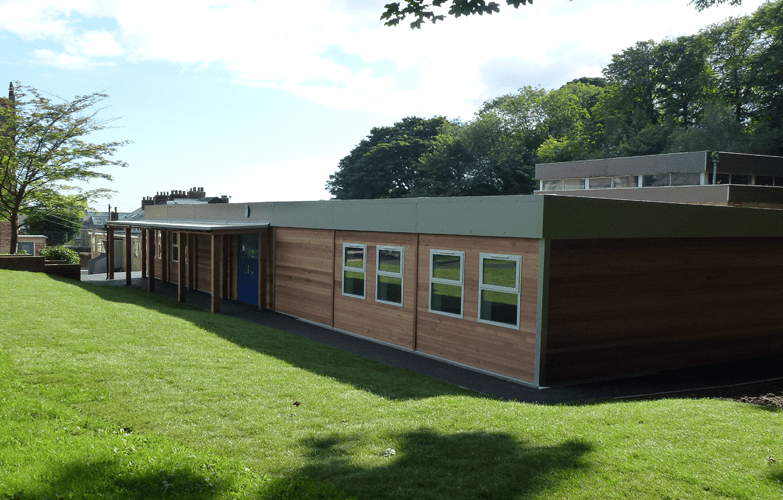Exploring the World of Portable Classrooms
Movable Education: Exploring the World of Portable Classrooms In the realm of education, adaptability is paramount. As populations grow and […]

Movable Education: Exploring the World of Portable Classrooms
In the realm of education, adaptability is paramount. As populations grow and shift, as emergencies arise, and as educational needs evolve, the traditional brick-and-mortar classroom model sometimes falls short. Enter the world of portable classrooms – a dynamic, flexible solution that has been gaining momentum in recent years. In this exploration, we’ll delve into the concept of movable education, examining its advantages, challenges, and potential impact on the future of learning.
What Are Portable Classrooms?
Portable classrooms, also known as modular classrooms or relocatable classrooms, are temporary or semi-permanent structures designed to provide educational spaces outside the constraints of traditional buildings. These structures can range from simple trailers to sophisticated, multi-unit complexes equipped with all necessary amenities.
While portable classrooms have long been used as a quick fix for overcrowding or during construction projects in established schools, their potential extends far beyond temporary solutions. Today, they are increasingly seen as viable long-term options for delivering education in a variety of contexts.
Advantages of Portable Classrooms
1. Flexibility: One of the primary advantages of portable classrooms is their flexibility. These structures can be easily moved and rearranged to accommodate changing enrollment numbers, demographic shifts, or specific educational needs. This adaptability allows schools to respond quickly to fluctuations in demand without the time and expense of constructing new buildings or renovating existing ones.
2. Cost-effectiveness: Portable classrooms are often more affordable than traditional construction projects. Since they are prefabricated off-site, they require fewer resources and less labor to assemble. Additionally, their modular design means they can be easily expanded or downsized as needed, minimizing waste and maximizing efficiency.
3. Speed of deployment: In emergency situations such as natural disasters or public health crises, portable classrooms offer a rapid solution for maintaining continuity of education. Because they can be quickly transported and set up, they provide schools with a means to resume classes without delay, helping to minimize disruptions to students’ learning.
4. Accessibility: Portable classrooms can be located virtually anywhere, making education more accessible to underserved or remote communities. Whether deployed in rural areas lacking traditional school infrastructure or in densely populated urban centers facing overcrowding issues, these portable structures bring learning opportunities closer to those who need them most.
5. Innovation in design: Advances in technology and design have transformed portable classrooms from basic trailers into sophisticated learning environments. Today’s portable classrooms can be equipped with state-of-the-art amenities such as climate control, interactive whiteboards, and even renewable energy systems. This integration of modern conveniences ensures that students have access to the same quality of education regardless of the physical space in which it is delivered.
Challenges and Considerations
While portable classrooms offer numerous benefits, they are not without their challenges. Some of the key considerations include:
1. Quality of infrastructure: Not all portable classrooms are created equal. Some may lack adequate insulation, ventilation, or structural integrity, leading to discomfort or safety concerns for students and teachers. Ensuring that portable classrooms meet the same standards as traditional school buildings is essential to providing a safe and conducive learning environment.
2. Stigma: Despite their practicality, portable classrooms can sometimes carry a stigma associated with temporary or makeshift structures. Students and educators may perceive them as inferior to permanent buildings, which can affect morale and engagement. Addressing this stigma through thoughtful design and integration into the broader school community is crucial to ensuring that portable classrooms are embraced as legitimate educational spaces.
3. Long-term sustainability: While portable classrooms offer immediate solutions to pressing educational needs, their long-term sustainability is a topic of debate. Some argue that investing in permanent infrastructure is more cost-effective in the long run, while others advocate for the continued use of portable classrooms as part of a flexible and adaptable approach to education. Finding the right balance between short-term pragmatism and long-term planning is essential to maximizing the benefits of movable education.
4. Environmental impact: The production and transportation of portable classrooms can have environmental consequences, particularly if not done sustainably. Minimizing carbon emissions, reducing waste, and using eco-friendly materials are important considerations for mitigating the environmental impact of portable classroom solutions.
Future Directions
As the world of education continues to evolve, portable classrooms are likely to play an increasingly prominent role. Advances in technology, design, and sustainability will continue to drive innovation in this space, making movable education an attractive option for schools and communities around the globe.
Additionally, the COVID-19 pandemic has underscored the importance of flexibility and resilience in education. As schools grapple with the challenges of remote learning, social distancing, and hybrid models, portable classrooms offer a practical solution for maintaining continuity of education in uncertain times.
Movable education represents a paradigm shift in the way we think about school buildings and learning environments. By embracing the flexibility, affordability, and accessibility of portable classrooms, we can create more resilient and inclusive educational systems that meet the needs of students and communities in a rapidly changing world. As we continue to explore the possibilities of movable education, we have the opportunity to shape the future of learning for generations to come.